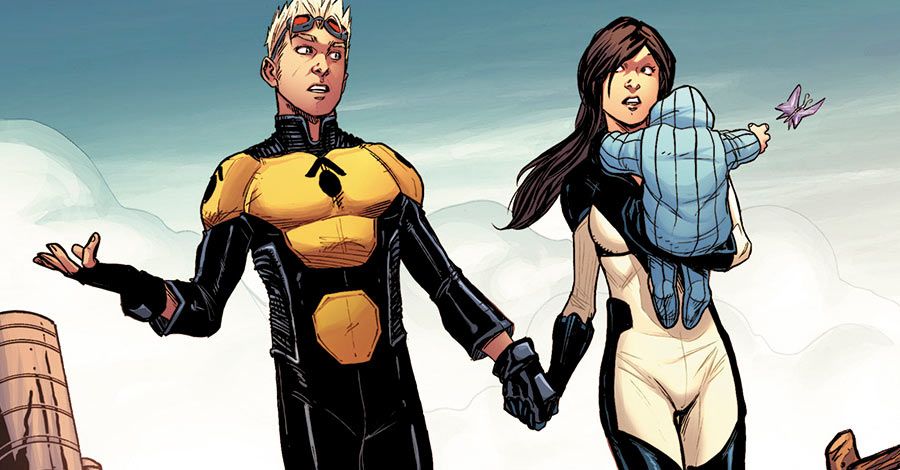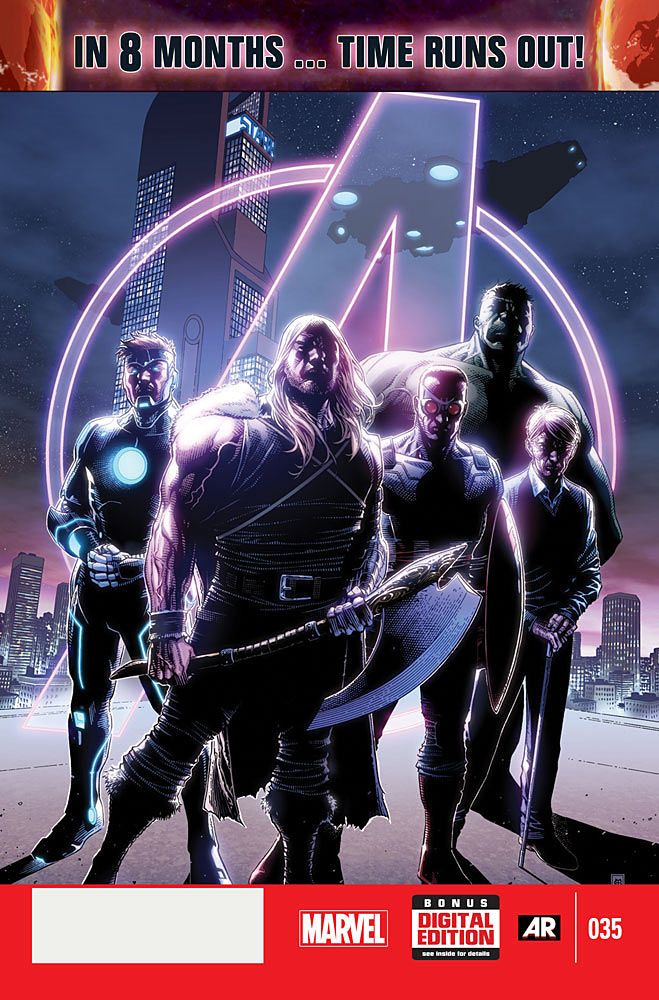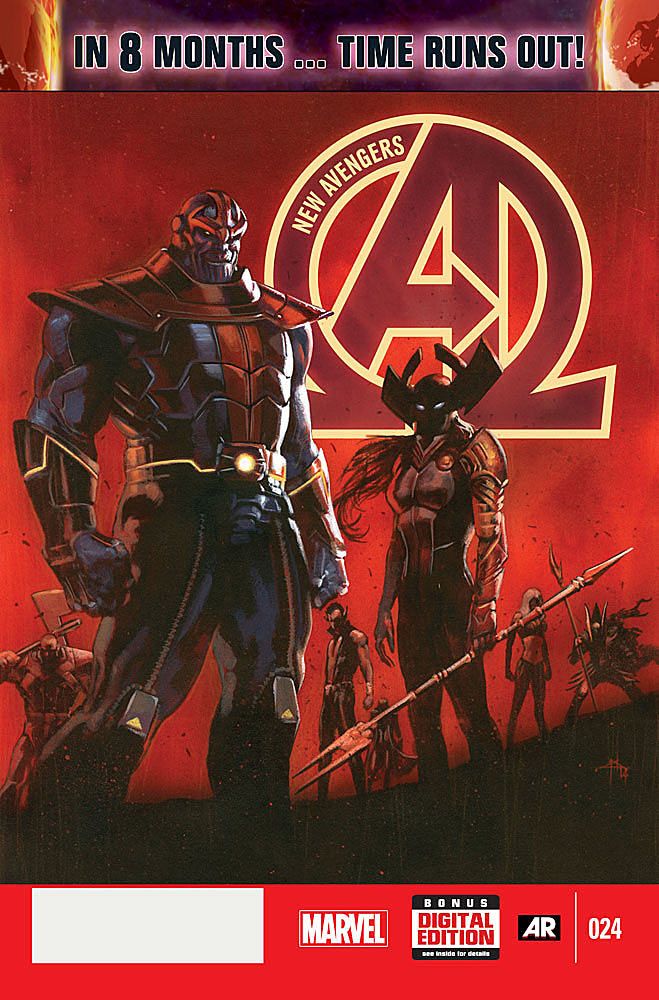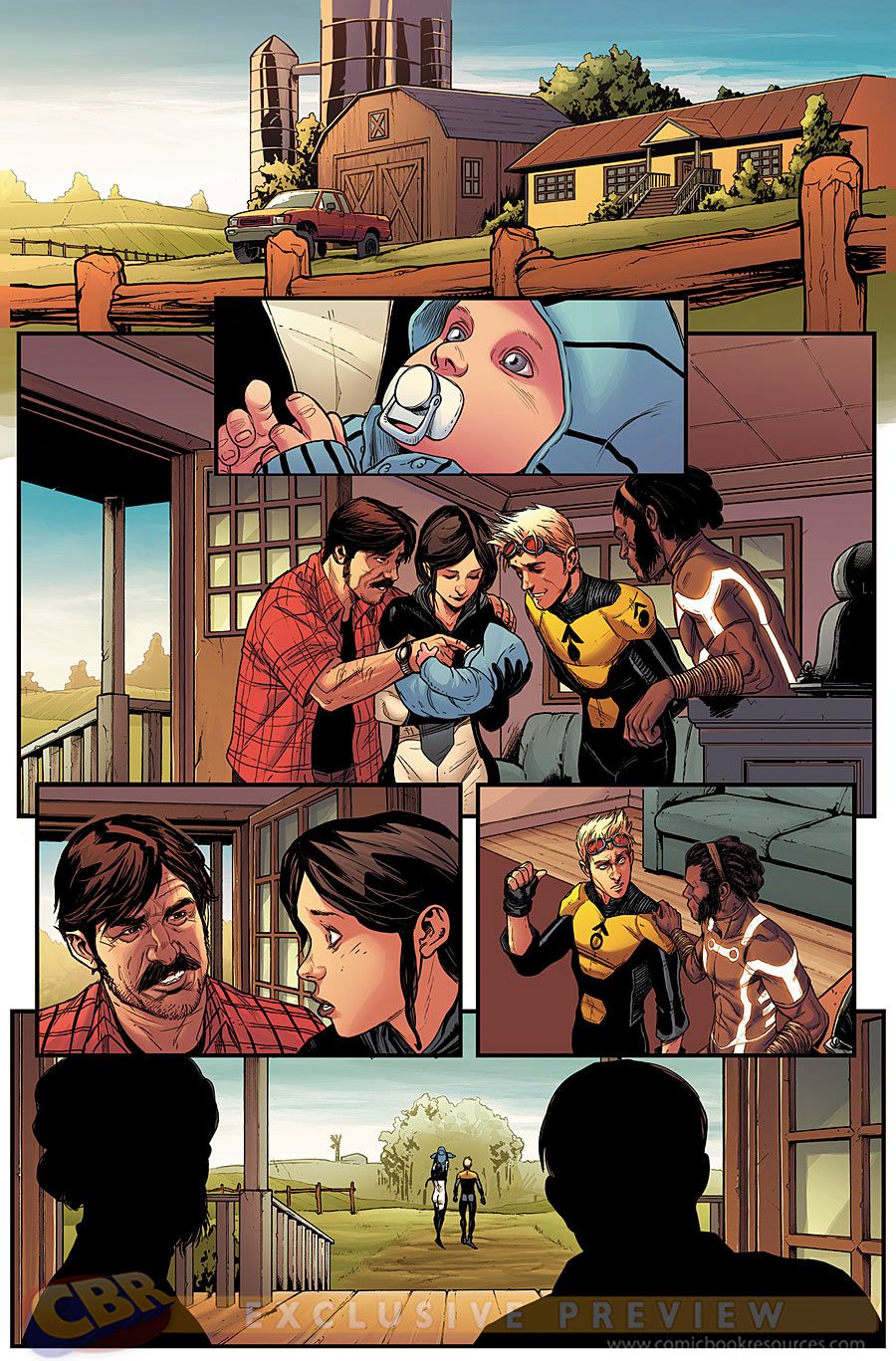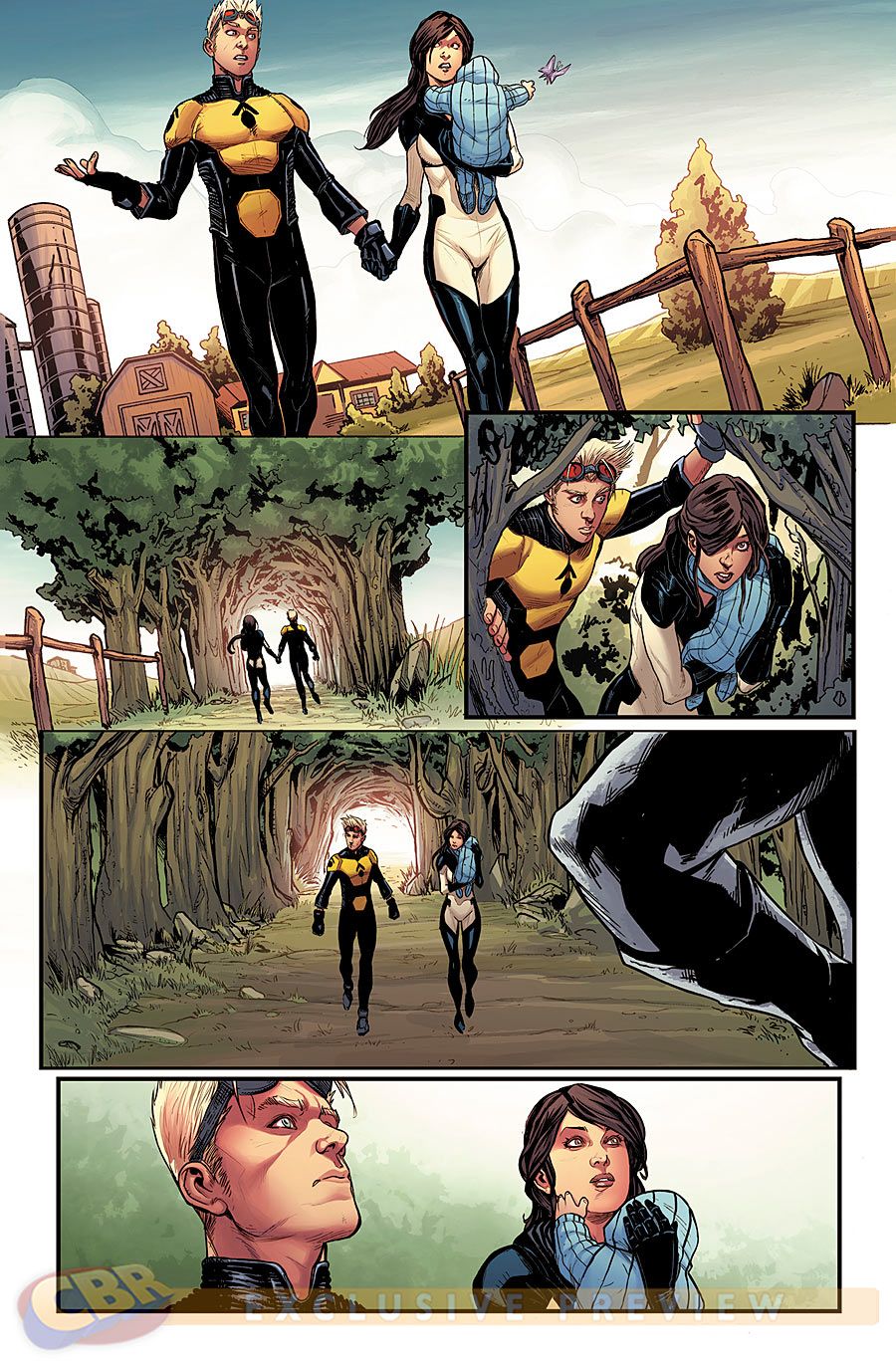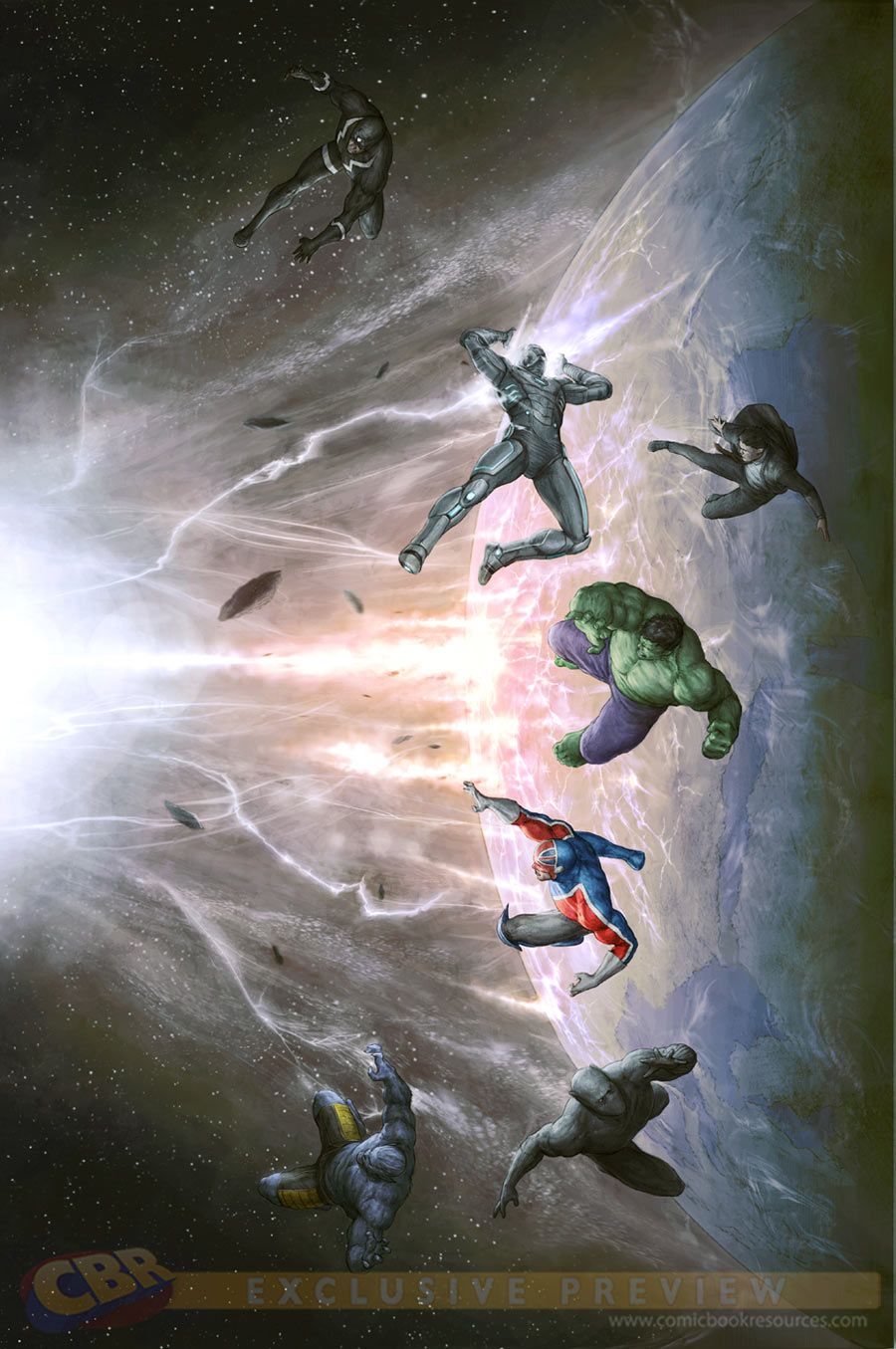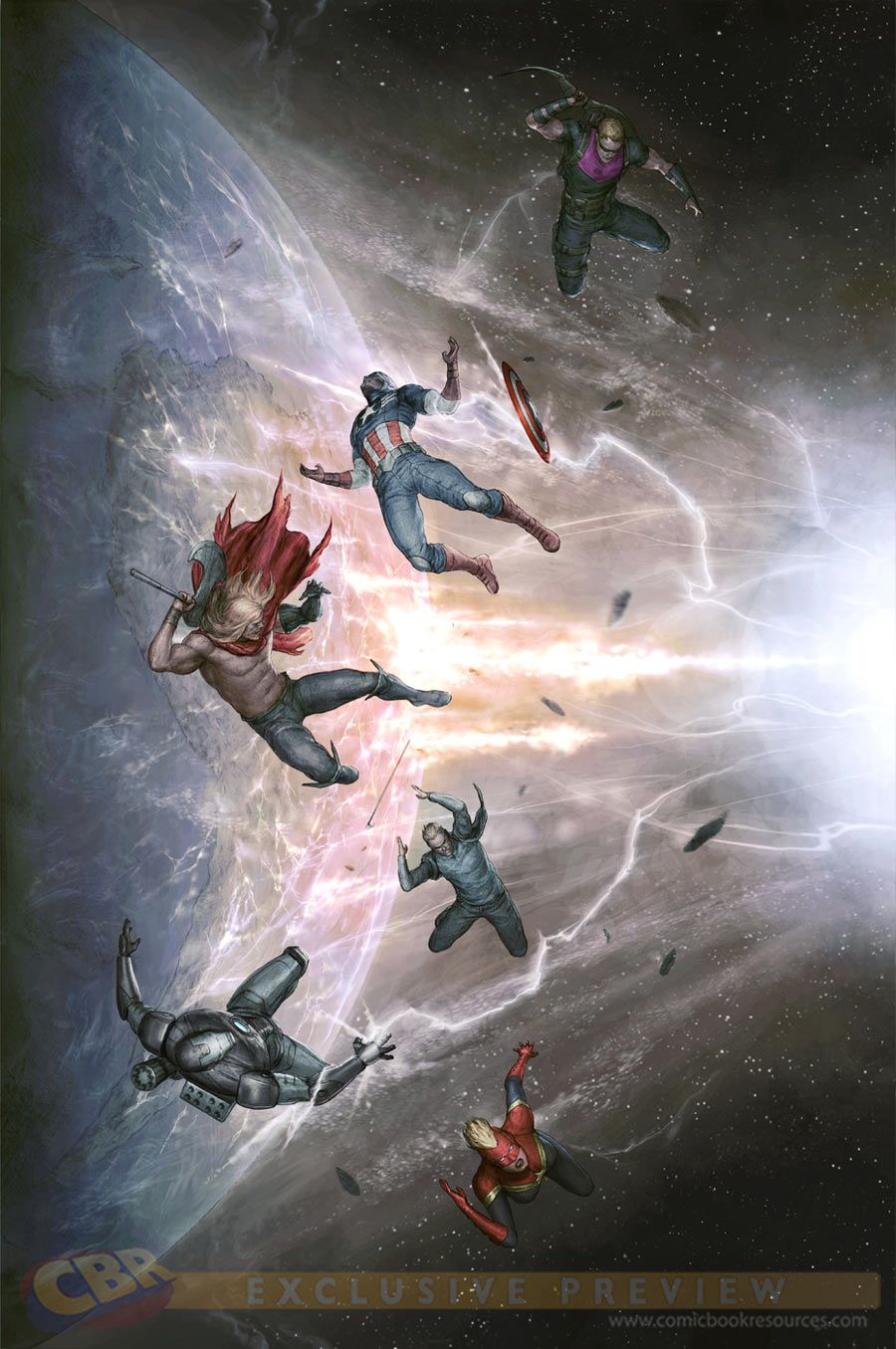For the last two years, Marvel Comics' Avengers have been far more than just Earth's Mightiest Heroes -- they've been engaged in an epic quest to save all of creation. In "Avengers," writer Jonathan Hickman has the titular team tackling the fallout from the collapse of the multiverse. While over in "New Avengers", the writer has the clandestine heroes who comprise the Illuminati tackling the mysterious "Incursion" phenomenon that appears to be the root of the cosmic collapse, which begins when two Earths from different realities occupy the same space and ends with the destruction of one or both of the planets.
"Time Runs Out" on the Avengers' Future
In "Avengers" #35, Hickman and artists Jim Cheung, Paco Medina, Nick Bradshaw and Dustin Weaver began the final act of the Avengers' quest to save the universe by kicking off "Time Runs Out," a storyline which jumps ahead eight months into the future of a very different Marvel Universe.
CBR News spoke with Hickman and Senior Vice President of Publishing and Executive Editor Tom Brevoort about the time jump, how it marks the beginning of the end of the epic story Hickman kicked off when he launched new volumes of "Avengers" and "New Avengers," and how the story in "Avengers" connects to "New Avengers, which is also making the jump to the future.
CBR News: Let's start by talking about the origin of this time jump. I understand this was part of Jonathan's outline and plans for these books from the beginning?
Tom Brevoort: Yes, the plan was that there would be a gap here. Exactly how long that gap would be was not specified.
Jonathan, what made you want to jump ahead like this? Was the time jump originally going to be this grand? With "Avengers" #35 it felt like you were moving from an Avengers story to a Marvel Universe-level event.
Jonathan Hickman: The idea was for the story to grow in scale as we moved forward, and as Tom said, yes, we were always going to jump forward because we wanted to show how much things had changed and there was a lot of stuff that we didn't want to give away that had happened in the interim period of time that's going matter to the end of the story. So it was a convenient mechanism to achieve that.
This eight-month time jump doesn't just show where the Avengers are. It also hints at what's going on with characters across the Marvel Universe. How hard was it to coordinate that?
Brevoort: There wasn't much to get in line in terms of everybody else. The beauty of skipping ahead to where we are was the only things we needed to know from people was the specifics about where their individual characters might be once we got to the point where we synch back up with the rest of the universe.
Hickman: Because we did it in this way we're responsible for making sure everything ties together. So as long as we're doing our job everything should line up. We all get together through the retreats and everybody knows where the books are going, plus we solicit three months in advance. So as long as I'm not dropping the ball we should be perfectly fine.
In "Avengers" #35 we discover that a lot of things have happened in the eight-month time jump -- S.H.I.E.L.D. appears to be in command of the Avengers, Sunspot has bought A.I.M., the Illuminati has expanded its ranks, and several heroes have left America and Earth. Will we see these events in other books as things move forward? Are there some core Marvel books where readers can see events like these unfold and come to pass?
Brevoort: You'll see some of that stuff happen in some other places, but during this period the other Marvel Universe books are going to tell their stories not our story. So if you're talking about things like Sunspot buying A.I.M. that's very much an Avengers thing, oddly enough given that it's Sunspot. So right here and right now is where you're getting to see that.
It's possible that at a certain point as we get close we might touch on some of these things in a book like "Avengers World." Plus there are certainly things that you see in "Avengers" #35 and the other "Avengers" and "New Avengers" issues that are actually the outgrowth of things that are going on in other titles across the Marvel Universe during this period, but really you should be able to read "Avengers" and "New Avengers" and be fine.
Let's talk a little bit more about the specifics of "Avengers" #35 starting with the art. Jonathan, how does it feel to be starting the final act of your Avengers epic with artist Jim Cheung, who helped you close out act one? I understand Dustin Weaver, Nick Bradshaw and Paco Medina also provided art for portions of this issue?
Hickman: Jim is one of the best. I absolutely adore his work and the guy himself. I don't really care about starting or ending arcs. Any time I get a chance to work with Jim I'll jump at it. It just so happened to work out like this. I'm very happy. The book is beautiful and Jim is amazing.
We did get a little bit behind and have to play catch up and I thought all the other guys that filled in on this issue did an amazing job. I was worried for a little while that it would feel disjointed and that it wouldn't really work as well as I wanted, but because everybody was compartmentalized in different sections of the story I thought it worked out really, really well. So Tom and everybody in editorial did a good job of saving us there.
In the latter half of the issue you and Jim took us to S.H.I.E.L.D. Station Golgotha, which was formerly Avengers Tower and appears to be a tightly controlled place. What can you tell us about the kind of power S.H.I.E.L.D. wields in the future? Do they have total control over the Avengers?
Hickman: No, they do not. The issue where you're going to find out a bunch of that stuff is -- Tom, correct me if I'm wrong -- is I believe "Avengers" #37, which Mike Deodato just finished drawing.
Brevoort: That is correct.
Hickman: In that issue you're going to find out how all of that works. There's a whole lot more going on with S.H.I.E.L.D. and their relationship with the Avengers. So you have to wait another month to find out the answers to those questions.
The way S.H.I.E.L.D. and the heroes working with them reacted gave "Avengers" #35 a "Civil War"-style feel. Is that an apt comparison?
Brevoort: It's certainly a comparison. Any time you have super heroes in conflict with one another, at least since 2005, people have pointed to "Civil War." This one is probably a little closer in that the crux of it comes down to Captain America and Iron Man much as it did in "Civil War." Although the actual issues that are being dealt with here are quite different.
Amadeus Cho, a character I'm a huge fan of and who doesn't often get a lot of spotlight, played significant role in the portions of the issue dealing with S.H.I.E.L.D. and their super hero associates. What made you want to bring Cho into this storyline?

Hickman: The Illuminati has changed over the past eight months There's stuff that's going to go on in "Inhuman" that's going to affect Black Bolt, and there's stuff going with all of those characters in their respective books. One of the things that's happened is the roster has grown a little bit and they've lost a bunch of guys we thought were going to be around.
Obviously we're going to tell the story of why these guys joined up and we're going to tell the story of what happened to the other guys. Everybody has a very specific role to play, and I'm a big Amadeus Cho fan, too. So the chance to squeeze him in there was one I was happy to take. It was a lot of fun and if anyone is new to the character, you should definitely check out all the amazing work done by Greg Pak and company have done over the years.
Sue Richards angrily confronted Amadeus about his role in the Illuminati and she appears to be tied to S.H.I.E.L.D. What's it like returning to the character and writing her in this role?
Hickman: I think Susan is acting exactly the way she would act given the things that have happened to her in the past eight months. I'm obviously familiar with the character and she's going to have a big role to play going forward. I certainly think everybody will be looking forward to the moment when she finally catches up with Reed. It should be something else.
Are her conflicts with Reed also informed by what's currently going on in James Robinson's "Fantastic Four" series?
Brevoort: We don't want to say too much because we don't want to give away anything that's going to be going on in James' book over the next eight months any more than we would want him to do the same for us. Much like our "Original Sin" conversations, Dave, there are going to be places here where there's not going to be a heck of a lot we can say simply because anything that we say may give away too much of one thing or another.
Not all the action in "Avengers" #35 happened on Earth. We visited three intergalactic locations as well. So is "Time Runs Out" like "Infinity" where big events are happening on almost every level of the Marvel Universe?
Hickman: Yes, big events are happening everywhere. This involves everything and everyone and it only gets bigger as we go forward. So all the stuff you see with Ex Nihlo and Abyss, and Star Brand and Nightmask, and all those other cosmic elements leads into a very interesting role for those characters going forward. That's probably some of my favorite stuff.
People are also going to find out what's causing all of this; what's making the Incursions happen and why the universe is dying before it's supposed to. All of those questions get answered in the next eight months.
RELATED: Brevoort Brings Marvel's "Avengers" to a Point of Convergence
So in terms of scope and scale this is much bigger than "Infinity?"
Brevoort: Yes, technically it's bigger than "Infinity." "Infinity" was very, for lack of a better term, space oriented. It was about space. Then the last arc we did of "Avengers," our "Original Sin" arc, was very much about time. Then these last eight months are sort of about all of that and everything else.
So it's not as simple as to say, "It's like 'Infinity' in that other planets are involved." Everything is involved. We've been blowing up this balloon bigger and bigger and now we're at the point where it's absolutely as large as it can possibly get. So much so that you're only seeing bits and pieces of the curvature of the balloon from where you're standing at this point. The shape and scale of it will be revealed further and further as each issue drops in these next eight months.
Finally, this story starts in "Avengers" #35, but "New Avengers" is also jumping eight months ahead as well beginning with issue #24. How tightly connected are the stories running through both of these books? Does one flow into another?
Brevoort: They're not linear in that the events of "New Avengers" #24 do not immediately pick up from the events of "Avengers" #35. That having been said, they are operating in unison. It is probably a pretty good idea if you're reading one to be reading the other especially a few months down the road where there will be some literal connectivity from one month to the next. There will be events that go from "Avengers" to "New Avengers" and back again, and certainly there will be stuff that you'll see in one book that will then come into play in the other.

So at this point it's almost like the books are one title, but it's one title that's not so lockstep and so linear in that for the most part "Avengers" focuses on the Avengers" characters, and "New Avengers" for the most part focuses on the Illuminati characters. The story that's going on though involves all of them. So there's a lot of crossover, cross pollination, and back and forth.
Hickman: I think you're okay for the first month or two thinking of them as two separate books. I think when we get to December they stop being two separate books. There's no pretense of them being separate books and one issue immediately follows the next ramping up to the very end of this story.
Also, I was looking at my outlines last night and it appears I've done a terrible thing. I've done a bad job, you might say, in that you actually find out some of the answers to some of the biggest mysteries that are out there hanging in "New Avengers" in "Avengers" issues. And some of the big mysteries in "Avengers" are answered in future "New Avengers" issues. Because as the stories get intertwined you find out that the solutions are actually on the other side.
So people are going to miss stuff if they're not reading both books. I'm not obviously asking them to read both, but I did in fact screw them if they're not.
Brevoort: [Laughs] I'm asking them to read both.
Hickman: [Laughs] So I would advise everyone, as always, to follow Tom's wise counsel.
After "Avengers" #35 you'll want to check out "New Avengers" #24. That may have more significance and important revelations than what you saw in "Avengers" #35.
Brevoort: Now that "Avengers" #35 has dropped a lot of the people that were confused by it are starting to understand how this whole thing works. The part that most people could not quite wrap their heads around before getting to this point was the notion that we were going to be eight months ahead of everybody else. Now that there's a story that they can point to they kind of understand it. So that's a good thing and means that they can focus both on the story that's going on here and hopefully if they're interested how Sue got to this point, what's going on with Iron Man, what the deal with the Hulk is, or whomever that they can continue to check out those books over the course of the eight months as those stories vector to the point where we picked things up here.
"Avengers" #35 and "New Avengers" #24 are both on sale now from Marvel Comics.

